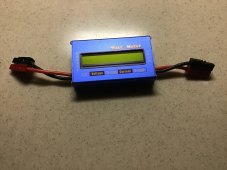hardtop
New Member
I've been using an ice-chest for a couple years as a full-time overlader and I'm graduating to a portable refer. I run a pure sinewave generator (Yamaha 2200) all day and will use that to power the refer but at night I turn the generator off. Since space is limited (in a car) and so is budget, I'm questioning if I really need a battery during that time. I have zero experience with refers and thought maybe I could crank the temp down during the day and let it thaw overnight.
The refer is an Engel MT45 and I will pack it with about 30 pounds of fatty rib eye or chuck steaks. The refer needs to be ice-cold to keep the meat fresh. I know it would be better with a battery, but I'm looking at the marine starter batteries lead-acid batteries at Orielly Auto Parts and some charger (not sure which?).
But if there are ways to make the temperature stay near freezing or to 40F and last through the night then I'm going that route. I also thought about buying one of those small jumpstart lithium battery replacements because of their size, but that probably isn't right nor is a starter deep cycle. Any ideas on the impact of leaving the Engel off just for overnight?

The refer is an Engel MT45 and I will pack it with about 30 pounds of fatty rib eye or chuck steaks. The refer needs to be ice-cold to keep the meat fresh. I know it would be better with a battery, but I'm looking at the marine starter batteries lead-acid batteries at Orielly Auto Parts and some charger (not sure which?).
But if there are ways to make the temperature stay near freezing or to 40F and last through the night then I'm going that route. I also thought about buying one of those small jumpstart lithium battery replacements because of their size, but that probably isn't right nor is a starter deep cycle. Any ideas on the impact of leaving the Engel off just for overnight?








